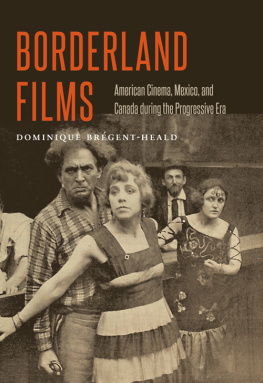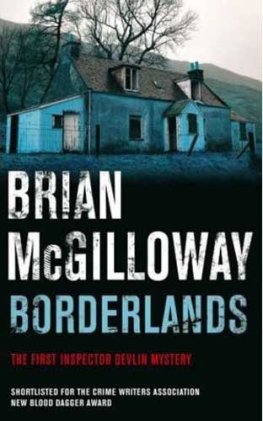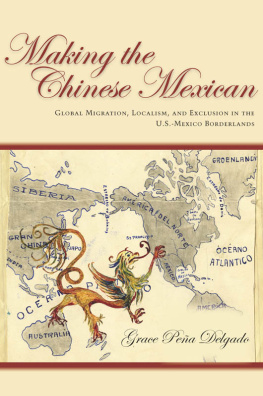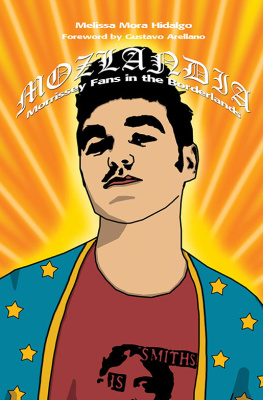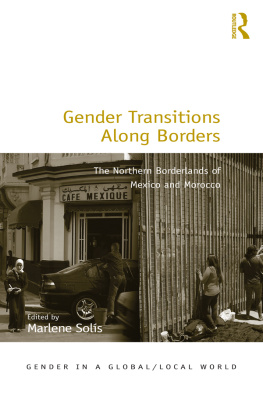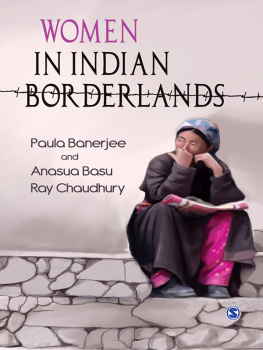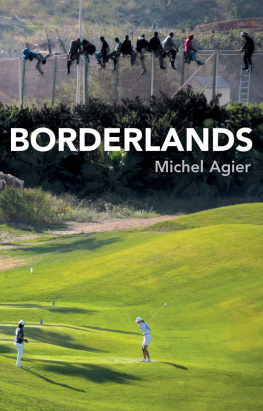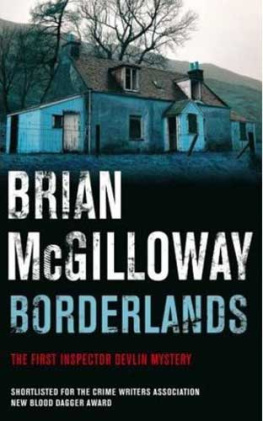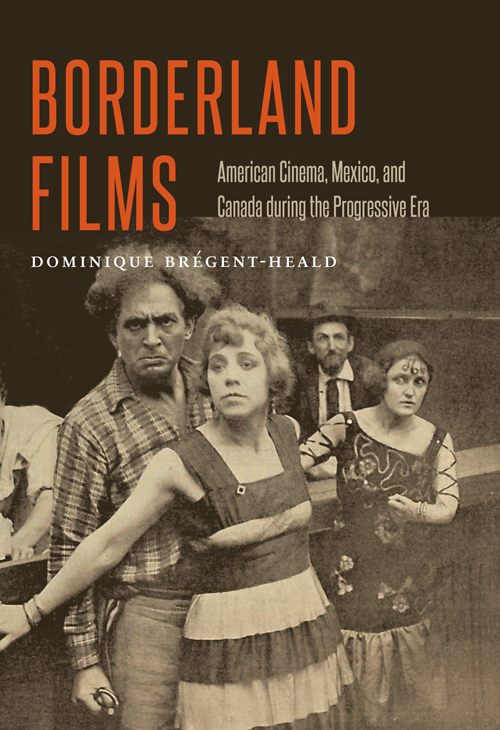
Brgent-Heald develops a long overdue and much needed comparative perspective on the twentieth-century history of films about the U.S. borders with Mexico and Canada. As it challenges notions of national and regional exceptionalism, Borderland Films is essential reading for anyone interested in border studies, North American history, scholarship on the Canada-U.S. border, hemispheric American studies, and film studies.
Claudia Sadowski-Smith, author of Border Fictions: Globalization, Empire, and Writing at the Boundaries of the United States
This beautifully written, interdisciplinary analysis combines cutting edge borderlands scholarship with a close analysis of a unique genre in the late Progressive Era American film industry. It examines the many ways that films about the northern and southern edges of the United States portrayed and explained racial tensions. It is an important and welcome addition to North American borderlands historiography.
Sheila McManus, author of The Line Which Separates: Race, Gender, and the Making of the Alberta-Montana Borderlands
In Borderland Films, Dominique Brgent-Heald analyzes a stunning array of moviesfrom the familiar to the forgottenproduced during the industrys early years and set along the boundaries between the United States and its northern and southern neighbors, with particular attention to overlapping and diverging portrayals of race, gender, citizenship, and nation. Carefully argued and lucidly written, this is essential reading for those engaged in the telling of a truly continental history of North America.
Andrew Graybill, author of Policing the Great Plains: Rangers, Mounties, and the North American Frontier, 18751910
Borderland Films
Borderland Films
American Cinema, Mexico, and Canada during the Progressive Era
Dominique Brgent-Heald
University of Nebraska Press | Lincoln and London
2015 by the Board of Regents of the University of Nebraska
Cover image is from the interior
Author photo courtesy of Chris Hammond
All rights reserved
Library of Congress Cataloging-in-Publication Data
Brgent-Heald, Dominique, 1973
Borderland films: American cinema, Mexico, and Canada during the Progressive era / Dominique Brgent-Heald.
pages cm
Includes bibliographical references and index.
ISBN 978-0-8032-7673-4 (hardback: alk. paper)
ISBN 978-0-8032-7884-4 (epub)
ISBN 978-0-8032-7885-1 (mobi)
ISBN 978-0-8032-7886-8 (pdf)
1. Motion pictures United States History 20th century. 2. Borderlands in motion pictures. 3. Mexican-American Border Region In motion pictures. 4. Canada In motion pictures. I. Title.
PN 1993.5. U 6 B 6745 2015
791.430973 dc23
2015014394
The publisher does not have any control over and does not assume any responsibility for author or third-party websites or their content.
Contents
There have been so many people and institutions that have played a part in helping me bring this project to completion, which I began in 2007. I apologize in advance for any person or organization I overlook. I first want to acknowledge funding from the Social Sciences and Humanities Research Council, as well as the institutional support and financial assistance received from Memorial University of Newfoundland. I extend a special thanks to Terry Bishop-Stirling, Sean Cadigan, and Chris You, each of whom, while serving as head of the History Department, provided me with encouragement as I was executing the manuscript. I also offer thanks to my colleagues, particularly Terry Bishop-Stirling and Jeff Webb, whose generosity, sense of humor, and friendship have been most appreciated, and John Sandlos, who read an early version of chapter 1. Thanks also go to Edward Dodd, who proofread a draft of the manuscript. I am grateful to Rene Clowe and Fran Warren for assisting me with a wide-ranging number of tasks, from fixing photocopier jams to helping me fill out postresearch trip travel claim forms.
During my research trips I was helped by a legion of archivists, reference librarians, and staff at the following institutions: Margaret Herrick Library at the Academy of Motion Pictures Arts and Sciences; Manuscript Division and the Motion Picture, Broadcasting, and Recorded Sound Division at the Library of Congress; Library and Archives of Canada; BC Archives; and Archives of Ontario. Without the diligence of the Document Delivery crew at the Queen Elizabeth II Library at Memorial, I probably would still be working on the book. Matthew Bokovoy and the staff at the University of Nebraska Press have been most supportive and encouraging in guiding this research project to its completion.
Over the years I have also benefited from the advice and expertise of fellow borderlands scholars. In particular Sterling Evans, the late Nora Faires, Claudia Sadowski-Smith, and John Herd Thompson have enthusiastically encouraged my scholarship. In 20067 I was fortunate to participate in the Bridging National Borders symposium cosponsored by the Clements Center for Southwest Studies at Southern Methodist University and at the Simon Fraser University. Working with Ben Johnson, Andrew Graybill (who kindly read an early draft of chapter 5), and the other participants (especially Catherine Cocks, Michel Hogue, and Deborah Kang) was an extremely rewarding and enriching intellectual experience. Most important, I am indebted to the scholarly generosity of Carol Higham and Sheila McManus, who read and provided extensive feedback on several drafts of my manuscript. Their candid comments and detailed suggestions were invaluable to me.
Above all I want to express my gratitude to friends and family for their patience and boundless support. Thank you to extended family members who have always offered me places to stay and lots to eat (not to mention wine to drink) while traveling to southern California for research. My sister, Delphine, has constantly been there to give me a boost when I needed it most. Words cannot describe how much my mom, Christina Petrowska Quilico, has helped me through thick and thin. I am so glad to have you in my corner. Last but certainly not least, I want to acknowledge my biggest cheerleaders: my husband, Merrill, my girls, Stella and Tillie, and the furkids. Thank you for loving me despite my foibles.
In 1909 the Selig Polyscope Company released On the Border, a wild and woolly tale of love and revenge featuring cowboys, gambling houses, and plenty of gunplay. Six years later Selig produced another film also titled On the Border (1915), a love story set against a cross-border smuggling ring, which similarly depicted a phase of western life. Although not a remake, the later film contained parallel characters and interrelated themes, such as criminality and violence, as well as adventure and romance. Yet while the 1909 film transpires in the U.S.-Mexico border region, the 1915 production portrays life in the borderlands of the United States and Canadian West. Despite their southwestern and northwestern settings, what really matters is that both films take place on the border, in territories where neighboring nations, communities, and cultures intersect.
This comparison provides a starting point to examine the emergence of a category of narrative motion pictures that I term borderland films. I estimate that during the 1910s the U.S. film industry manufactured and exported approximately five hundred fictional motion pictures set on or about the physical edges of the United States. Although mostly filmed in New York, New Jersey, and, after 1910, southern California and south Texas, these borderland films take place in diverse geographic regions. A little more than half of borderland films produced in this period are set in the U.S.-Mexico border region and unfold in the territories of northern Mexico, particularly Baja California Norte, Sonora, and Chihuahua, and in the U.S. states and territories bordering Mexico, most notably California and Texas, as well as Arizona and New Mexico. With the exception of a small number of productions set in the Niagara region or on the QuebecNew York border along the St. Lawrence River, films of the U.S.-Canada borderlands typically transpire in the western interior, especially southern Alberta and northern Montana. Other borderland films take place in the Pacific Northwest, that is, British Columbia, Washington, and Oregon. The Klondike, the transnational region straddling Canadas Yukon Territory and the U.S. state of Alaska, represents another prominent setting for borderland films in this period.

